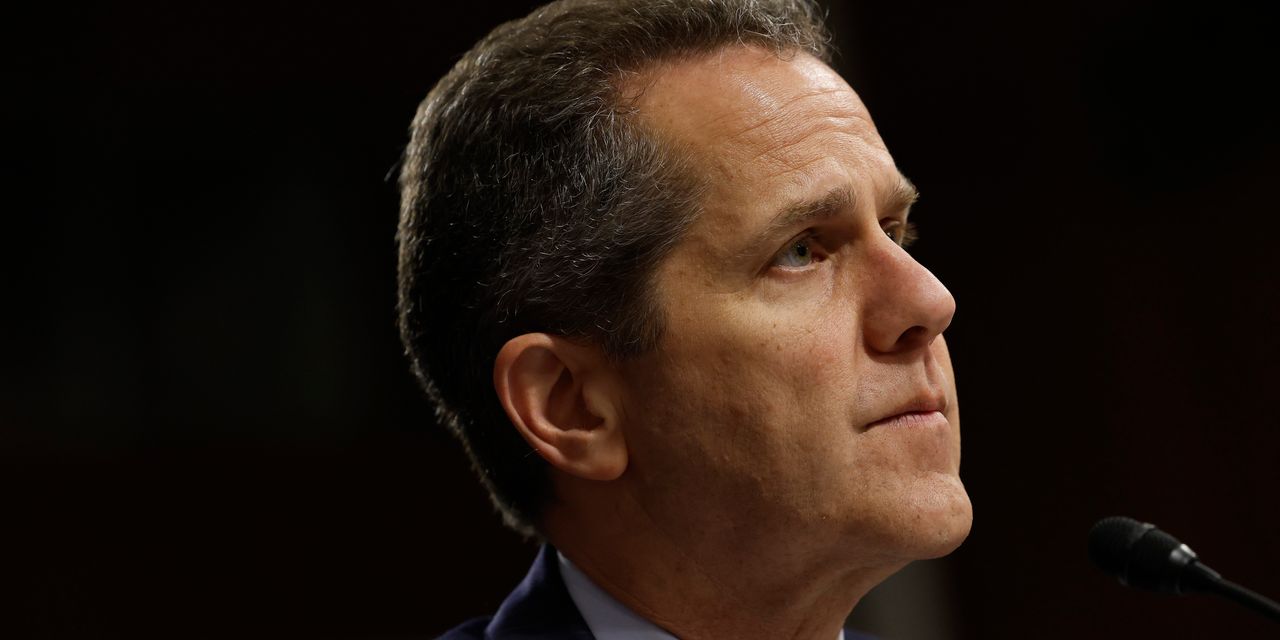Michael S. Barr, vice chair for supervision at the U.S. Federal Reserve, on Monday said he’s leading a multiyear effort to increase capital requirements for banks in the wake of three bank failures earlier this year.
Among the many regulatory recommendations Barr wants to see introduced over time is applying enhanced risk-based capital rules to banks with $100 billion or more in assets, down from the current threshold of $700 billion.
“Our recent experience shows that even banks of this size [$100 billion in assets] can cause stress that spreads to other institutions and threatens financial stability,” Barr said in a speech at the Bipartisan Policy Center. “The risk of contagion implies that we need a greater degree of resilience for these firms than we previously thought.”
After a multimonth study, Barr said he’s not recommending any major changes in enhanced supplementary leverage ratios, the global systemically important bank
(G-SIB) surcharge or the existing countercyclical capital buffer (CCyB). Nor did he recommend any major overhaul of the annual bank stress test.
One technical change proposed for the G-SIB surcharge is to “improve the measurement of systemic indicators under the G-SIB surcharge framework, reduce ‘cliff effects’ and increase the sensitivity of the surcharge to changes in a bank’s risk profile,” Barr said.
Barr is proposing to require banks with assets of $100 billion or more to account for unrealized losses and gains in their available-for-sale (AFS) securities when calculating their regulatory capital.
“This change would improve the transparency of regulatory capital ratios, since it would better reflect banking organizations’ actual loss-absorbing capacity,” Barr said. “Realizing the losses from these securities, without adequate capital to protect from those losses, was an important part of the set of events that triggered the run on Silicon Valley Bank.”
Long-term debt requirements will be added to the regulatory mix as a way to ensure there is more capital on the balance sheets of banks in the event of a shock to the system.
The proposals will amount to requiring the largest banks hold an additional 2 percentage points of capital, or an additional $2 of capital for every
$100 of risk-weighted assets.
Also read: Fed official eyes ‘reverse stress tests’ for banks as results awaited after 2023 bank failures
“While this increase in requirements could lead to some changes in bank activities, the benefits of making the financial system more resilient to stresses that could otherwise impair growth are greater,” Barr said.
Barr had proposed the regulatory review nearly a year ago, prior to the collapse of Silicon Valley Bank in March.
The proposed capital requirements will go through the standard rule-making process with input from banks, public officials and others during public comment periods.
Hugh Carney, vice president of capital policy for the American Bankers Association, said the proposed rules amount to “knee surgery for a wrist injury,” adding that he still does not see “convincing justification” for them.
Andrew Olmem, a partner in law firm Mayer Brown’s Washington office, said regulators won’t have as much flexibility in tailoring proposed rules partly because the process now under way has not included a quantitative impact study. The administrative process for the proposed rule changes is starting with a notice of proposed rulemaking instead of a more gradual process, he said.
Alexa Philo, a senior policy analyst for the bipartisan Americans for Financial Reform, said she was encouraged by Barr’s comments about improving the strength of the U.S. financial system.
Also read: Fed stress tests see large banks able to handle recession and slide in commercial real estate prices
Read the full article here




